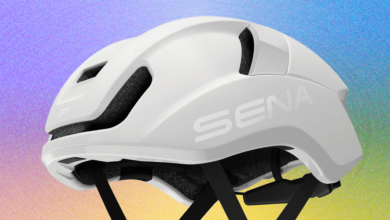This New Pyramid-Like Shape Always Lands With the Same Side Up
In 2023, Domokos—along with his graduate students Gergő Almádi and Krisztina Regős, and Robert Dawson of Saint Mary’s University in Canada—proved that it is indeed possible to distribute a tetrahedron’s weight so that it will sit on just one face. At least in theory.
But Almádi, Dawson, and Domokos wanted to build the thing, a task that turned out to be far more challenging than they expected. Now, in a preprint posted online yesterday, they have presented the first working physical model of the shape. The tetrahedron, which weighs 120 grams and measures 50 centimeters along its longest side, is made of lightweight carbon fiber and dense tungsten carbide. To work, it had to be engineered to a level of precision within one-tenth of a gram and one-tenth of a millimeter. But the final construction always flip-flops onto one face, exactly as it should.
The work demonstrates the important role of experimentation and play in research mathematics. It also has potential practical applications, such as in the design of self-righting spacecraft.
“I didn’t expect more work to come out on tetrahedra,” Papp said. And yet, he added, the team’s research allows mathematicians to “really appreciate how much we didn’t know and how thorough our understanding is now.”
Tipping Point
In 2022, Almádi, then an undergraduate aspiring to become an architect, enrolled in Domokos’ mechanics course. He didn’t say much, but Domokos saw in him a hard worker who was constantly in deep thought. At the end of the semester, Domokos asked him to concoct a simple algorithm to explore how tetrahedra balance.
When Conway originally posed his problem, his only option would have been to use pencil and paper to prove, through abstract mathematical reasoning, that monostable tetrahedra exist. It would have been almost prohibitively difficult to pinpoint a concrete example. But Almádi, working decades later, had computers. He could do a brute-force search through a huge number of possible shapes. Eventually, Almádi’s program found the coordinates for the four vertices of a tetrahedron that, when assigned certain weight distributions, could be made monostable. Conway was right.
Almádi found one monostable tetrahedron, but presumably there were others. What properties did they share?
While that might seem like a simple question, “a statement like ‘A tetrahedron is monostable’ cannot be easily described with a simple formula or a small set of equations,” Papp said.
The team realized that in any monostable tetrahedron, three consecutive edges (where pairs of faces meet) would need to form obtuse angles—ones that measure over 90 degrees. That would ensure that one face would hang over another, allowing it to tip over.
The mathematicians then showed that any tetrahedron with this feature can be made monostable if its center of mass is positioned within one of four “loading zones”—much smaller tetrahedral regions within the original shape. So long as the center of mass falls inside a loading zone, the tetrahedron will balance on only one face.
2025-08-10 11:00:00





